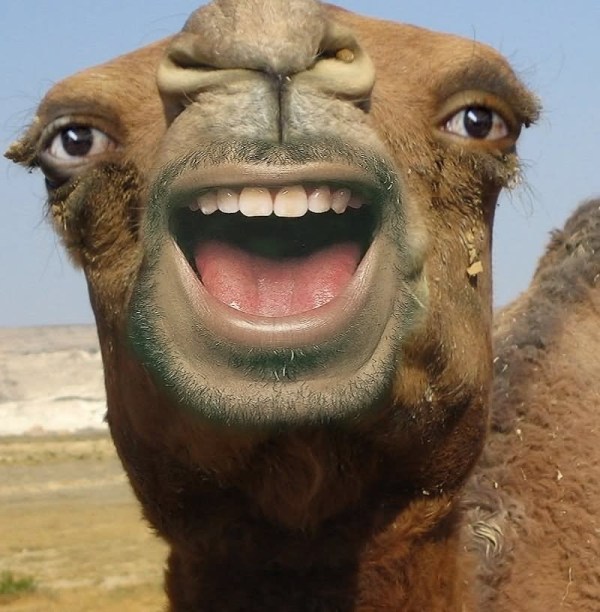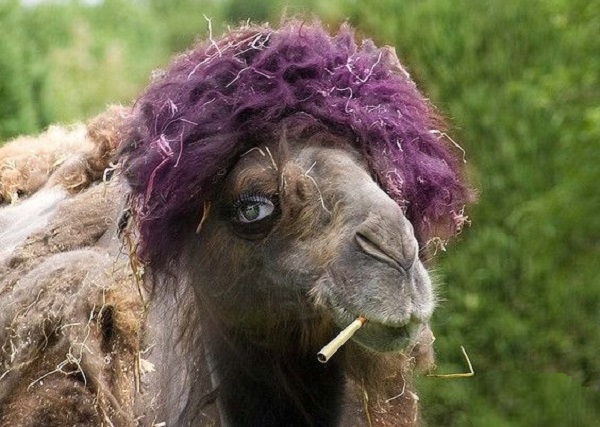
Camels rarely make the news because they are one of the mammals that loves to be around people, and they can even be seen in zoos. They are so resilient; they could probably survive a post-roach apocalypse. When camels walk through a sandstorm, they can close their nostrils and wait for the storm to pass, then carry on as if nothing happened. It’s not all roses with camels, though. In March 2023, a camel killed two zookeepers at a Tennessee petting zoo, causing panic among zoos across the U.S., where many keepers are undergoing retraining to handle these seemingly docile animals. Here are 10 things about camels that will surprise you.
They can bite your head off.
Camels rarely become aggressive, but when they feel threatened or are under stress, they can become very aggressive. It is advisable to stay as far away from an aggressive one as possible. When angry, a camel will lunge at you with its foot, and one kick can easily break your jaw or fracture your skull. Camels are also capable of biting, and when their mouth is fully open, an adult human's head can fit inside. In 2016, a camel bit off the head of its owner in Rajasthan, India, after he left the poor animal tied up in the desert heat all day.
Angry Camel Could Become Public Safety Nightmare
When sheriff's deputies arrived at the Tennessee petting zoo, they found the aggressive camel still attacking the bodies of unconscious zookeepers. It is believed that the zoo did not have enough water for the animals, which may have caused the aggression. Police had to kill the animal because it was following them and did not seem to be deterred by the number of people there. It would also prevent zookeepers from receiving medical attention.
They can go two weeks without food and water.
Camels are very good at maintaining their food reserves and that is why they are able to go so long without food or water. They can gather food from thorny bushes and even the smallest grass on the ground. Camels also gulp down a lot of water in a short time and once they are well fed, their bodies slowly use up the food. They store their food reserves as fat in their humps, so when there is no food, you just notice the hump getting smaller and finally falling to one side of their back, but the camel keeps going.
Wild camels exist, but are endangered.
There are three species of camels, called dromedaries, which make up 90% of all the camels in the world. They have one hump, are generally taller and less hairy. Another species is the Bactrian, which is also called the Asian camel because most of them come from China and Mongolia. There are also wild Bactrians, which also roam parts of China and Mongolia, but there are less than 1,000 left in the wild because their habitat has shrunk over the years. All camels, including wild ones, are not dangerous to humans unless their lives are truly threatened.
They can drink 200 liters of water in 3 minutes.
Camels have large mouths with lips that can fold back, allowing them to drink even the smallest puddles of water. Another thing they do so well is drink quickly, and they do it in style. When they are really thirsty, camels can quickly drink up to 53 gallons of water (200 liters) in 10 minutes. To put that into perspective, the average family car holds between 45 and 65 liters of fuel. So, one drink for a camel could fill four full tanks with some left over. No wonder they can go two weeks without a drink.

They don't store water in their humps.
It is a common myth that camels store water in their humps and draw it out when thirsty, but this is not true; the humps are used to store fat and are considered a delicacy. Camels do not have much fat in the rest of their bodies because this would cause their bodies to heat up quickly when the desert heats up. So they store their fat reserves in one place in the humps, reducing the heat load on other parts of the body. A typical camel hump can carry up to 80 pounds of fat, and this is always ready to be used when the camel is thirsty or hungry, so the humps quickly dissolve and fall to the side when food becomes scarce.
They are very social creatures.
Camels prefer to live in a herd, and a herd of up to 30 animals will live in harmony, at least until one female wants to mate and there are many males in the herd. The animals tend to follow one dominant male or female, so as long as you have the right leader in front, everyone will fall in line. Camels also communicate by growling and meowing, and they have different sounds for different situations. The relationship between a mother and her babies is close and amazing to watch.
Their milk is healthier than cow's milk
Camels are a source of livelihood for millions of people in the communities where they are raised. Camel meat has much more protein and vitamin E than cow meat. Camel meat also contains a fair amount of omega-3 and omega-6 fatty acids. The milk is the most amazing because it contains twice as much vitamin C as cow milk. Camels rarely produce as much milk as cows, so unless you have a herd, you're stuck.
They can live up to 50 years.
To have a large herd of camels, farmers must be patient because camels grow slowly and do not start breeding until they are four or five years old. A camel has a gestation period of 14 months, so you can only have one calf in two years, so the calves are jealously guarded. However, camels rarely get sick, and as long as you have food and proper care, camels will live for up to fifty years, so they are considered a real treasure.
They were domesticated over 3,000 years ago.
Camels may not be man's best friend, but they have been man's best ship for thousands of years, which is why they are called the ships of the desert. It is unclear exactly when the first animals were domesticated, but there is early evidence of domestication in the Arabian Peninsula, dating back to 930 BCE.
Do you know any other interesting facts about camels? Let us know in the comments below.













Оставить Комментарий